If you are following me on Instagram you have likely heard, seen, or skipped through my (hundreds – at this point … LOL!) of stories about my sourdough starter. I honestly didn’t know if I was going to blog about it at all because I wanted to make sure that I knew the ins and outs of sourdough before I shared any of it with you in blog form! Lately, many of you have been asking for me to share my go-to sourdough recipe, but personally, I think we should take this slow and steady (just like sourdough starter! LOL!) because making your own sourdough is quite the process.
So, today, I thought we would focus on sourdough starter and the importance of making and caring for your starter! Are you ready to dig in??
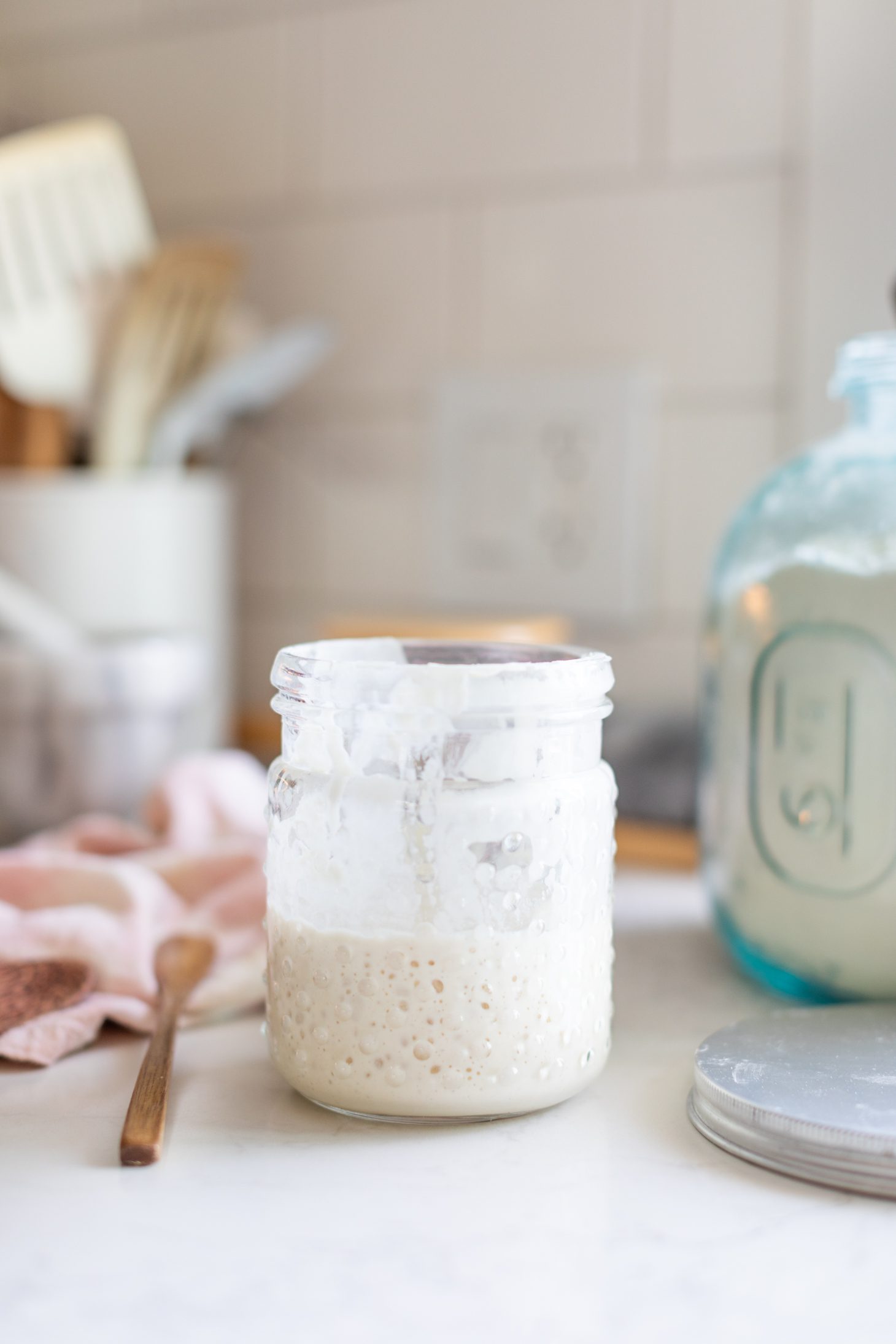
What is sourdough?
First of all, let’s talk about sourdough! So what the heck is it anyway? Well, before quarantine I thought sourdough was just bread, but what I have learned through my research is that proper sourdough is actually fermented anywhere from 12-48 hours. That fermentation process is actually great for your gut and for those who are gluten intolerant (not celiac) it could be the bread for you as it contains little to no gluten. For those who follow me closely, you’ll know that I have been transitioning to a plant-based diet over the last couple of years, I gave up meat but I’m not about to give up carbs!! LOL! In my humble opinion, there is nothing better than a piece of sourdough with some butter and a little drizzle of honey. Who’s with me?!
How did I get on the sourdough train?
I was inspired to start making my own sourdough after I watched my cousin Stephanie’s stories on Instagram. Her mom (my Aunty Mary!), has a blog called A Couple of Celiacs and she challenged her girls (Steph and Sam!) to make their own gluten-free starter. They were both documenting the process on their Instagram stories along the way, and after I watched Steph’s stories I was splitting a gut laughing, and I immediately wanted to make my own. I was off to the races and was about to begin the process of my very own starter.
What is a starter?
When COVID hit chances are, if you weren’t buying TP, you were probably buying flour and yeast to make your own bread! Then, just like the toilet paper scenario, there was a sudden lack of yeast available at the supermarkets! Since no one could get their hands on yeast, everyone started trying to make their own yeast. When I looked further into this, I was shocked to find out that yeast is basically just made from the combination of flour and water (aka starter!).
Many people find this process to be very easy and straight forward, but I kept screwing mine up (more on that below!). It took me about two to three weeks to finally nail it. Now, I have a starter, she is strong and well but I still have yet to give her a name! I have been baking about 2-3 times a week with my starter which has allowed me to gift many loaves to all of our family and friends.
If you don’t have self-activating yeast, then a sourdough starter is essential if you want to make your own. With the starter, you will also have to discard some of it and instead of throwing it out, you can make some really great discard recipes instead. I will be sharing some of my favourite recipes with you next week! So, without further adieu, let’s talk about how to make your own starter!
Before I take you through how to make and feed your starter, I thought it would be helpful to quickly run through my first attempt at making my own starter (which was a total fail) and my second attempt (which was a huge success). Through both of these attempts I have learned so much and I think it would be helpful for you as well!
Attempt #1: FAIL
With it being my first attempt at making my own starter I really wanted to compare different recipes that I found online to determine which one was the best! I was following A Couple of Celiacs, King Arthur Flour, and Sourdough Schoolhouse recipes to make my own starter. For all of these recipes, I used all-purpose flour because it was the only flour I had on hand at the time!
If you watch my first attempt on my IG stories you will know that it wasn’t very successful … LOL! Below I’ve listed a few reasons why I think my sourdough starter didn’t turn out the first time!
Why my first attempt didn’t work:
- I used unbleached all-purpose flour and from my research, I found that it can take much longer using this type of flour!
- I was using tap water, I’ve heard that the type of water you have can be finicky and it’s best to use filtered water (without chlorine)!
- I kept moving my starter around (first it was in the oven with the light on, then over the fireplace and lastly on my kitchen counter). I realized that you need to keep your starter in the same spot. It will do best in a cozy spot where there isn’t much of a draft!
- I had too many starters growing at the same time and I was told that they can potentially steal yeast from one another.
- I was using measuring cups and it is not as accurate as using a digital scale.
Attempt #2: SUCCESS
For my second attempt instead of using all-purpose flour, I started with a really good whole wheat flour. The reason that I use whole wheat flour for my second attempt was that after a little bit of research, I discovered that whole wheat flour has higher enzymatic activity and ferments quicker than all-purpose flour does! This just means that your starter will grow faster if you use whole wheat flour at the beginning of the process instead of all-purpose flour! If you want a white sourdough loaf you will need to phase out the whole wheat flour and replace it with all-purpose flour. But, if you want a whole wheat sourdough loaf you can continue using the whole wheat flour!
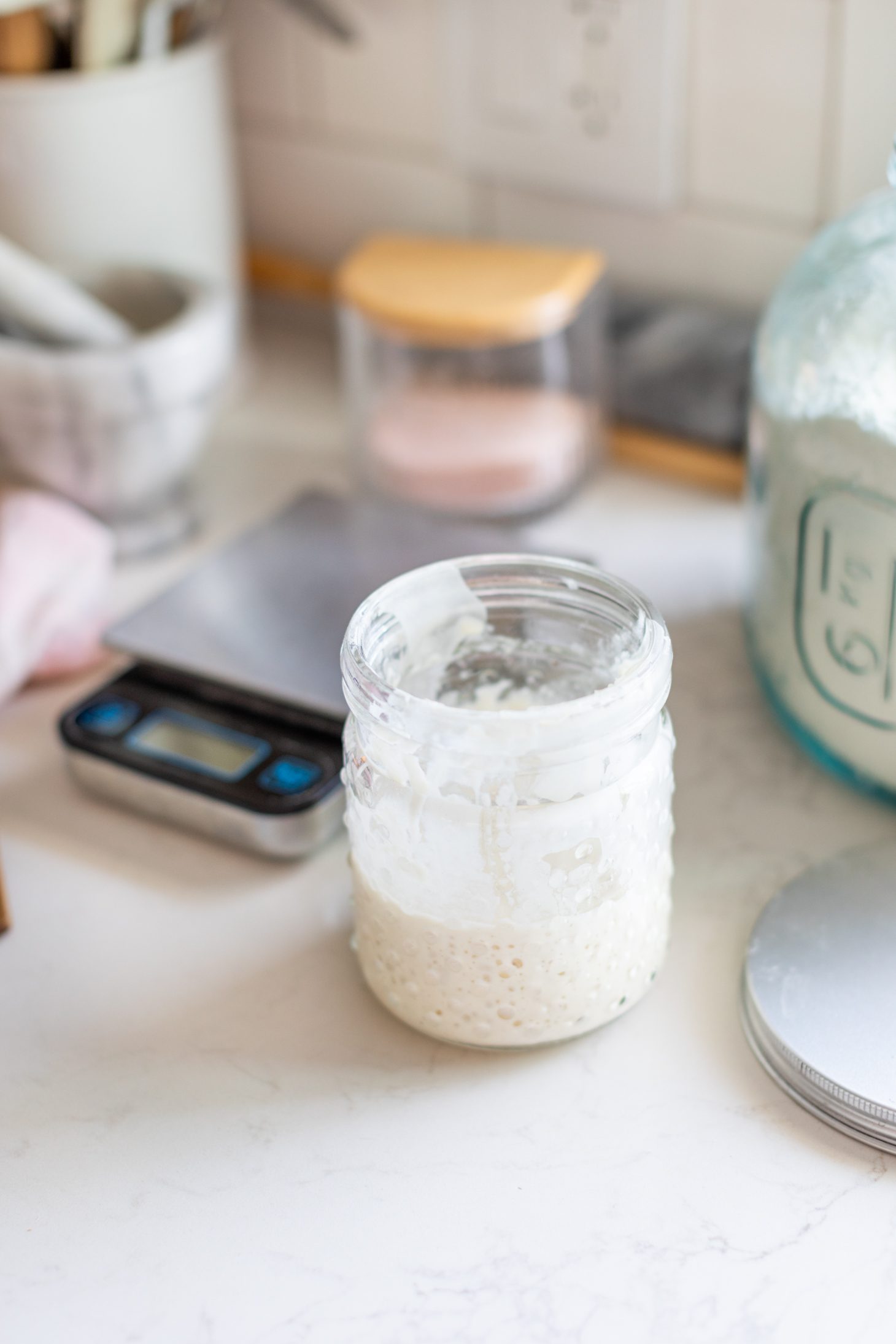
How to make your own starter
I have been guided by three specific people very closely during this process. My aunty Mary from A Couple of Celiacs (she is very knowledgeable and resourceful when it comes to this process!), King Arthur Flour, and Shannon from Sourdough Schoolhouse. I have learned everything (well, maybe not quite … LOL!) there is to know about sourdough with the help of these amazing people! The recipe that I will be sharing with you today on how to make your starter was developed by King Arthur Flour and you can find it here.
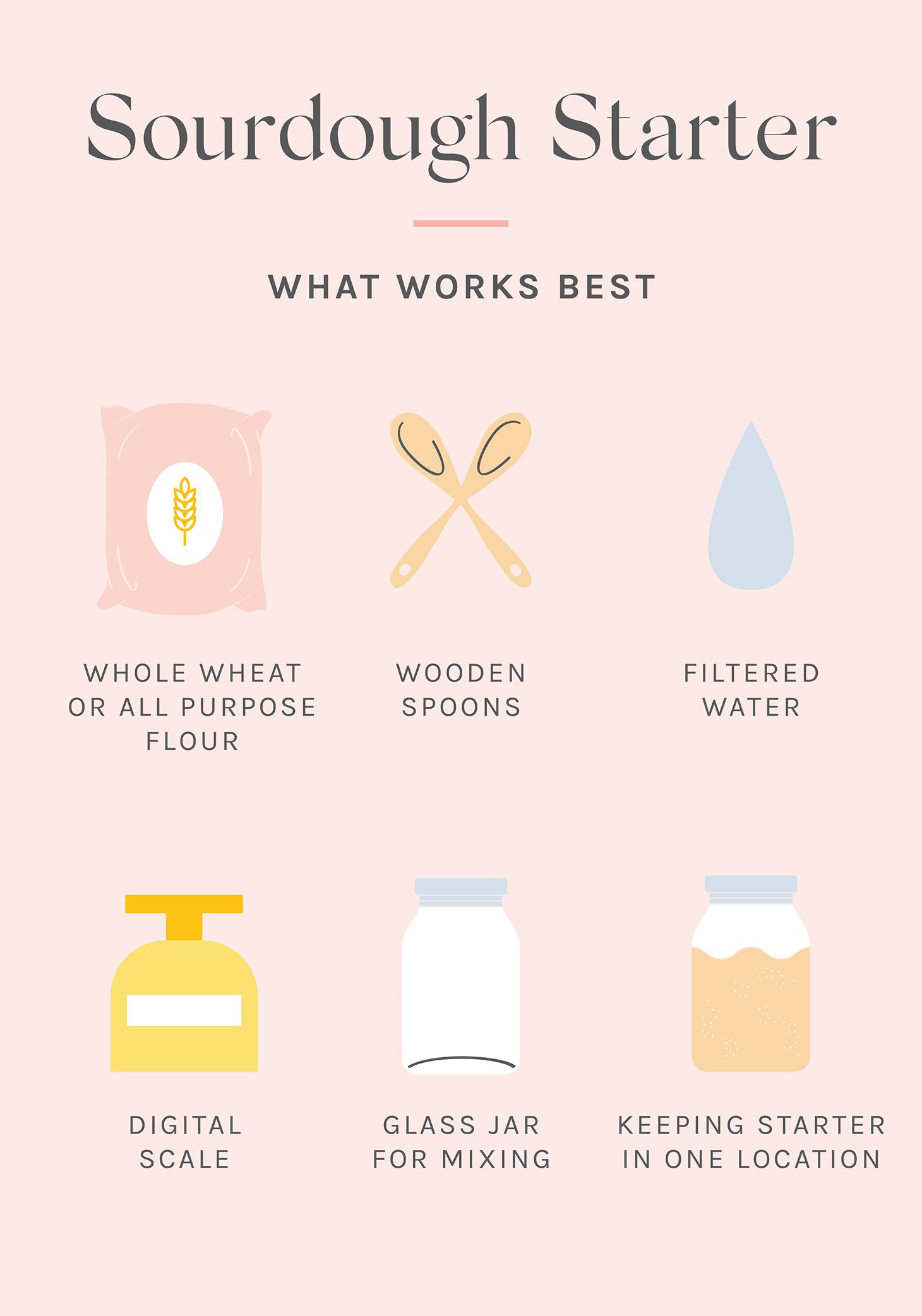
For best results you will need the following items:
- Use whole wheat flour to start and all-purpose flour for feeding your starter (if you want a white sourdough loaf)
- Use a digital scale (it is worth every penny)
- Use filtered water (without chlorine)
- Use a glass container
- Only stir with a wooden spoon. Avoid using plastic or metal
- Keep your starter in the same spot (in your oven if it’s not too hot, in your kitchen cabinet or on your counter)
Pro tip: Add an elastic band around the jar indicating how big your starter was when you fed it. This will allow you to see how much it grows throughout the day!

Step #1: Making your starter
1. As mentioned above, it is best if you use a glass jar, (Weck jars are my favourite, they are not only functional but beautiful as well) I have SO many mason jars laying around the house and that’s what I have been using for my starter, but any glass jar will work.
2. Place your jar onto your digital scale and add 50g of whole wheat flour and 50g of water. Mix them together using a wooden spoon, the consistency should be similar to a muffin batter and sticky.
4. Close the lid, but don’t completely seal it as some air will need to get into the jar. Place your starter in your oven with the light on, in a kitchen cabinet or on the counter (but once you pick a spot, make sure to leave it there)! I keep mine on the kitchen counter under our pot lights, it’s warm and where there is no draft.
3. Feed your starter every 12 hours morning and night, but if you happen to forget and feed it every 24-36 hours that’s ok too! (note, that if you feed it every 24-36 hours it will just slow down the process).
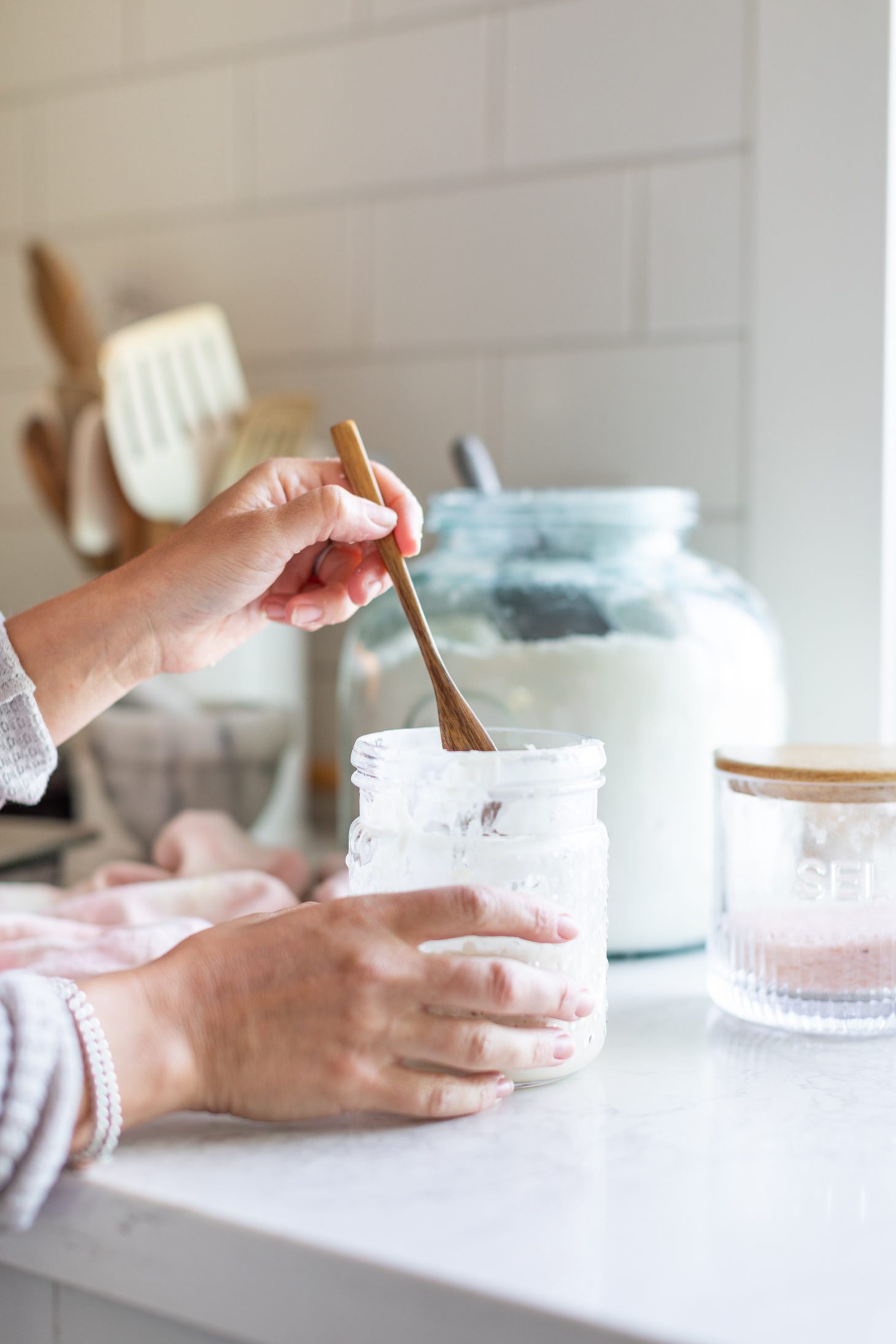
Step #2: How to feed your starter
1. First, you will need to discard some of your starter, all that you will need to keep is 10 to 25 g. I have a container filled with discard that I leave in the fridge and I use it to make crackers, pancakes, waffles, and many other recipes! You can find a list of discard recipes online, we have some of my favourite discard recipes next week. Depending on how much starter you are left with you can always give some to your family and friends as well.
2. Add 50g of filtered room temperature water and 50g of all-purpose flour to your 10 to 25g of starter. Please note that you will not need to use rye or whole wheat flour to feed your starter unless you would prefer a whole wheat loaf. If that’s the case, you can continue to feed your starter whole wheat flour.
4. Stir with a wooden spoon, close the lid (lightly) and place it back in the same spot!
Pro tip: Continue feeding your starter every 12 hours until you notice that it starts doubling in size within 4-6 hours this will take roughly about a week. Once it reaches this point it means the starter is active and you can start making your sourdough loaves!
Since I have been documenting this journey on Instagram I thought it would be helpful to share these videos with you as well. You can watch the 11-minute highlight reel below!
You shouldn’t be able to use your starter for at least a week, so I will be sharing my favourite discard recipes with you on the blog next week. Make sure when you discard your starter to save it in a jar in the fridge to make one (or all!) of the recipes I will be sharing with you … or any other discard recipes that your heart desires! Make sure to keep feeding your starter and prep it for the final blog because in the next couple of weeks I’ll share how to make your own sourdough loaves!
I have started an FAQ section below, so if you have any questions please let me know and I will continue to update and add to it on a regular basis!
Have you started making your own sourdough or are you sticking to buying it at the supermarket?
xo
Jilly
FAQ’s:
1. Does it mean your starter is dead if the consistency is runny?
No, your starter will go through many different stages. At times it will look very frothy and bubbly, then it will look a bit runny, but it doesn’t mean it is “dead”. In fact, it would take 3-4 days of not feeding it for your starter to “die”.
2. Do I need to feed my starter every day?
If you find that you aren’t baking enough to use and maintain your starter, you do not have to continue to feed it once a day to keep it alive. To preserve your starter, you will need to feed it, let it get active and bubbly (roughly 4-6 hours) and then seal the lid and place it in your fridge. You will need to continue to feed your starter once a week to maintain it! King Arthur Flour has a wonderful resource on how to maintain your starter and you can find that here!

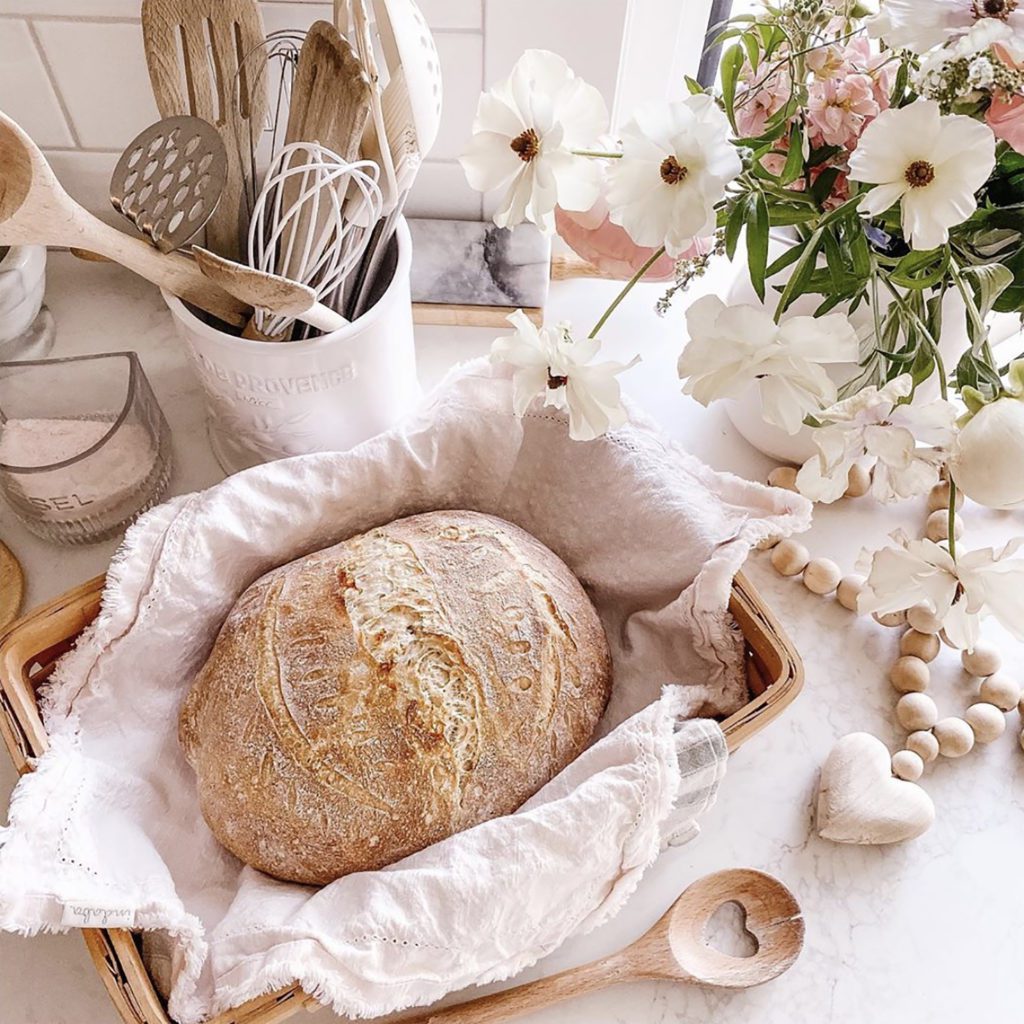


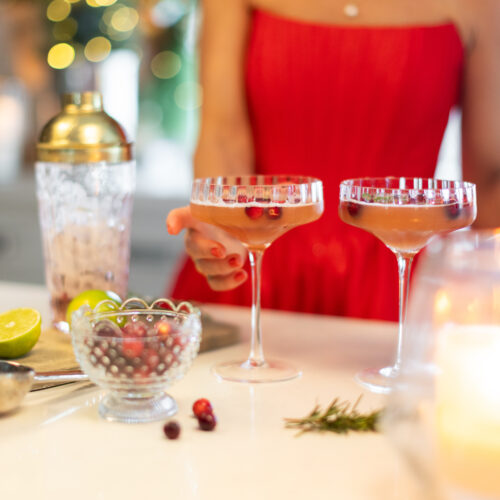

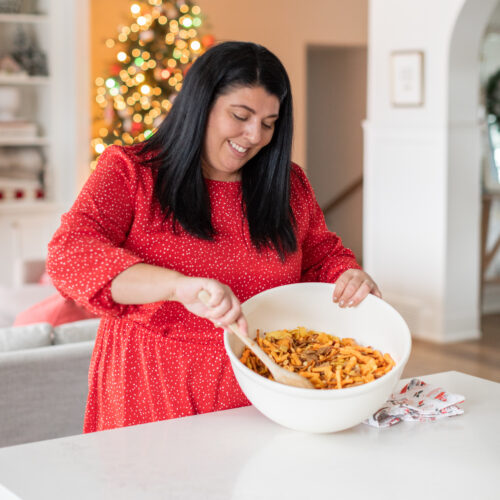
This is great! Its impossible for find yeast so this is great way to be able to venture into bread baking!
Once the starter is active (after a week or so) do you continue to feed it every 12 hours indefinitely?
Would love to see a blog on best tools for baking the bread as well!
Hi Jessica,
You don’t have to continue to feed it if you don’t want to! If you would like to save your starter for a rainy day you can put it in the fridge. Before storing it in the fridge, feed your starter, let it get active (rising and falling), seal the lid and place it in the refrigerator. To keep your starter alive you will need to feed it about once a week instead of feeding it every 12 hours. King Arthur has a great blog post about storing your starter in the fridge: https://www.kingarthurflour.com/blog/2012/04/08/maintaining-your-sourdough-starter-food-water-and-time. I will be sure to include my favourite tools for making a sourdough loaf in my final blog post! xox
I have been starting this process and finding there just isn’t a lot of details in the recipes and IM ALL ABOUT SPECIFICS. I would find myself having so many questions with the recipes I found and would end up ‘winging’ it. Most informative post yet I have found! Thank you!!
I have been making a starter for the last two weeks. I still don’t know if it’s ready. It gets lots of bubbles on top and smells soury but doesn’t seem to double in size. Only thing I haven’t been using is distilled water- I am just using tap water. Help!
Hi Darlene,
You can try the float test to determine if your starter is ready to use! Take about a teaspoon of your starter and place it in some water. If it floats it means that it is ready to use. On the other hand, if it doesn’t float it means that your starter isn’t quite ready to use! If that the case, continue feeding your starter and repeat the float test in a few days! I hope that helps! xo
This may be a silly question, but how do you know when you’ve failed the attempt? After how long? I’m on Day 6 and it just seems nothing is really happening (although not sure I know what I’m looking for).. Do I keep feeding at this point or start over? Thanks!
Unless it’s mouldy you haven’t ruined it! Just continue to feed it every 12 hours and place it in a warm spot! xox
Can I sub spelt flour for whole wheat?
Do I always have to leave the lid a little bit open throughout the process?
Yes, just don’t completely seal the lid and allow for a little bit of air to get into the jar! xo
If you want to save your discard, can you discard into the same jar or do you need to discard in a separate jar every 12hrs?
You can add the discard into the same jar! xoxo
Hi Jillian! I follow you on Instagram and you really inspired me to hop on the sourdough bandwagon. I must’ve watched you sourdough highlights 1000 times to get really acquainted with the process (there are so many steps and important details!) My first loaves were pretty good which encouraged me to keep perfecting the technique. Thank you so much for all the helpful tips and info! Looking forward to your recipes!! xoxo
Hi Jillian,
I just started my starter Bready White today.! Do I need to discard right away(after 12 hours) ? or keep feeding it 50/50 until it starts to bubble than start the discard process?
Cheers
You will need to discard some of your starter every time you feed it! xox
I have an active starter (22 days of blood sweat and tears)! But now what do I do with it? Do I feed it every 12 hours or every 24 hours? I just don’t know what to do to keep maintaining it. I’ve been using the discard but I need to know what to do now with it regarding a feeding schedule. Worried I’m not doing it right. Thanks Jill!
Hi Audrey,
You don’t have to continue to feed it if you don’t want to! If you would like to save your starter for a rainy day you can put it in the fridge. Before storing it in the fridge, feed your starter, let it get active (rising and falling), seal the lid and place it in the refrigerator. To keep your starter alive you will need to feed it about once a week instead of feeding it every 12 hours. King Arthur has a great blog post about storing your starter in the fridge: https://www.kingarthurflour.com/blog/2012/04/08/maintaining-your-sourdough-starter-food-water-and-time. xox
Hi! I’m looking forward to your “discard” recipes! Did you end up creating your own starter or did you stick with the sourdough schoolhouse one? I’m on day 7 following her recipe – feeding twice per day- using all purpose and wholewheat…small bubbles not doubling in size…ug. My discard container is getting big…I made pancakes which were “meh”…I’m looking for some yummy discard recipes. Your bread looks amazing – thanks for the posts!
I actually ended up using both! I used Shannon’s starter and then my own started to take off! Don’t give up yet, sometimes some will take longer than other’s and that’s ok! xo
Okay, so I just started my starter journey three days ago and it seems to be going pretty good 🤞🏻However; each time I’m feeding my starter do I discard everything except 50g of starter? I’m using the 1:1:1 ratio you suggested. It just seams like I’m discarding a lot each time….
You do end up discarding quite a bit, that’s why I like to store my discard and use it for other recipes! xo
Hi Jillian,
I have a question about your instructions. It says to leave only 10-25 g of yeast and discard the rest and then add 50 g of flour and 50 g of distilled water. When I watched your video, one of the corrections you made was doing a ratio is 1:1:1. Could you please clarify?
Hi Agatha,
There are many different methods on how you can feed your starter. I tried the 1:1:1 ratio and found that it didn’t work as well as using 10-25g of discard and mixing in 50g of flour and 50g of water! I hope that helps!
xo
Hi Jilly,
I am in the process of making my first sourdough starter and am getting a nice jar of discards, have you posted your recipes for discards yet or can you direct me somewhere for some good ones?
Also, when the big day comes to do my first loaf of sourdough where do I find the recipe?
Thank you, Michelle
Hi Michelle, We have paused all of our post this week, but I will be sharing my favourite discard recipes and my sourdough loaf recipe soon! If you are looking for some discard recipes for the time being I would suggest looking at some of the recipes on King Arthur Flour (https://www.kingarthurflour.com/).
xo
Once you have your discard in a jar, do you need to maintain it if you don’t use it right away? Store in the fridge and just keep adding or what is recommended?
You can just keep adding your discard to this jar and use it when you are ready! xo